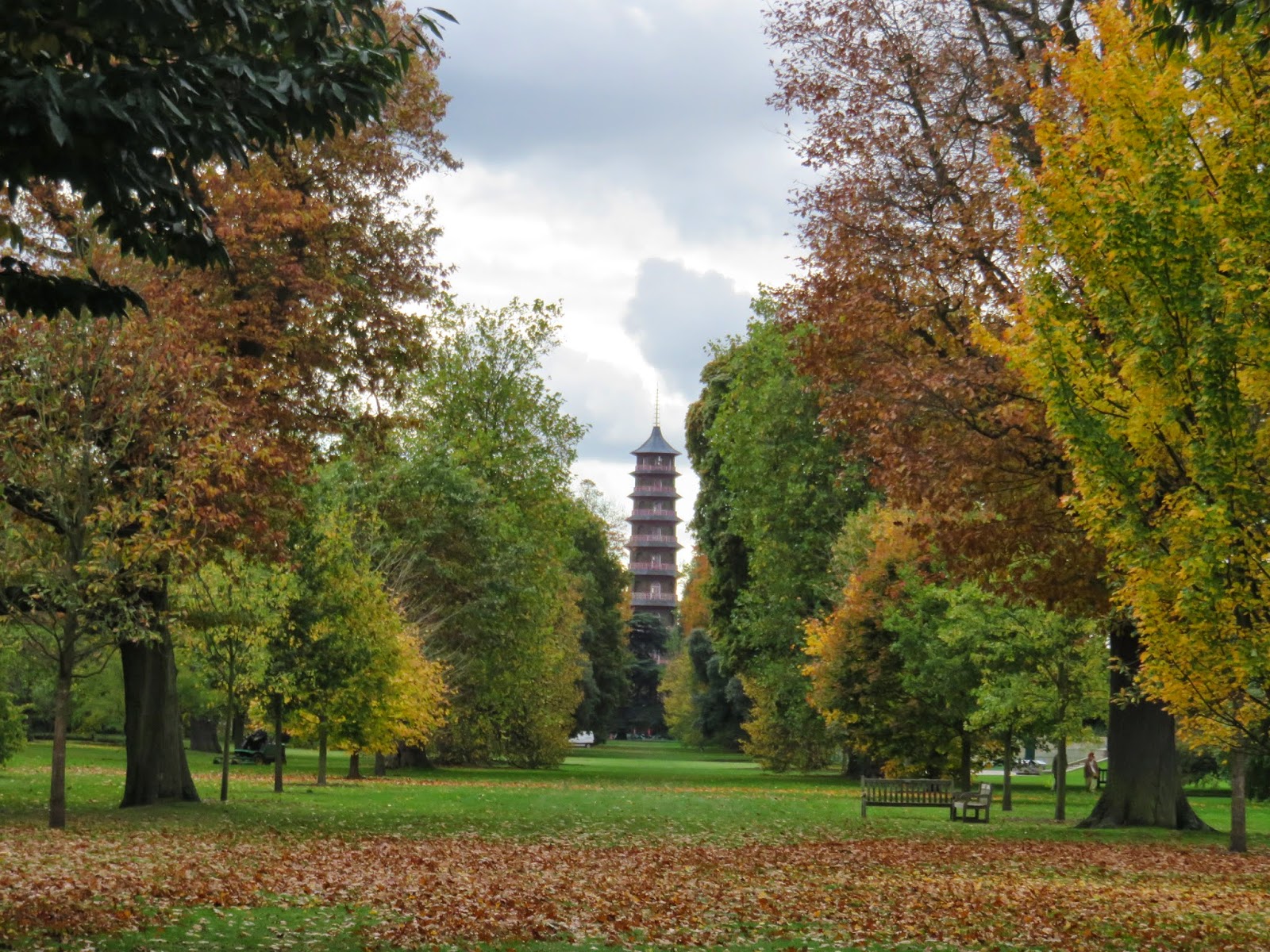After a sausage sandwich and a pint of Adnams Topaz (well Sue had orange juice) we went to Kew. We entered via the Elizabeth gate and soon were looking across the grass at Kew Palace - Originally the home to a rich Flemish merchant, the first royal residents were George II, his wife Queen Caroline and
their ever-growing family. However, Kew Palace will always be
associated with the ‘madness’ of George III.
We then walked on to the centre of the gardens, past King William's Temple,
and on to the tree top walkway - best described on the Kew Gardens' website
'Opened on International Biodiversity Day 2008, the Rhizotron and Xstrata
Treetop Walkway stands in the Arboretum, between the Temperate House
and the lake.It was designed by Marks Barfield Architects, who also
designed the London Eye. The 18-metre high, 200-metre walkway enables
visitors to walk around the crowns of lime, sweet chestnut and oak
trees. Supported by rusted steel columns that blend in with the natural
environment, it provides opportunities for inspecting birds, insects,
lichen and fungi at close quarters, as well as seeing blossom emerging
and seed pods bursting open in Spring. The walkway’s structure is based
on a Fibonacci numerical sequence, which is often present in nature’s
growth patterns.' http://www.kew.org/visit-kew-gardens/explore/attractions/treetop-walkway
Great views (albeit we were too early for real Autumn colour)
..especially of the Temporate House (which is being refurbished and is not open at the moment)...
..and the macaws (which you could hear everywhere even if you couldn't see them !).
We then started to walk back crossing the Pagoda Vista...
...and then the Rose Garden in front of the Palm House. The Palm House is considered to
be the most important surviving Victorian iron and glass structure in
the world. It was designed by Decimus Burton and engineered by Richard
Tanner to accommodate the exotic palms being collected and introduced to
Europe in early Victorian times.
We also came to a second view point - the Syon Vista.
Whilst most roses were over a few still had some loooms - 'Rosa Golden Celebration'
and 'Rosa Wisley 2008'.
Inside the Palm House were some amazing plants including this Banana (Musa - Ice Cream).
and 'Encephalartos altensteinii (Eastern Cape giant cycad)' - from the Kew Gardens website
'The name Encephalartos is derived from the Greek, and means
‘bread in the head’. This refers to the practice of removing the pith
from the cycad's stem and burying it in the ground for two months before
kneading it into bread and baking it in embers. During the two-month
burial, toxins within the pith are destroyed.
The superb specimen of this cycad at Kew is one of the oldest pot
plants in the world. It was collected in the Eastern Cape province of
South Africa in the early 1770s and brought back to England in 1775 by
Francis Masson, one of Kew's earliest plant collectors. For many years
the Kew plant was known as E. longifolius but recent studies in South Africa have proved that it is E. altensteinii.
The cycad now measures 4 m 23 cm from the base of its stem to the
growing point (an average growth rate of only 2.5 cm per year). It has
produced a cone only once at Kew. On that occasion in 1819, Sir Joseph
Banks came to view the plant on what proved to be his last visit to Kew.' http://www.kew.org/science-conservation/plants-fungi/encephalartos-altensteinii-eastern-cape-giant-cycad
Time for a cup of tea sat by the pond in front of the Palm House.
A few more birds joined us:
and
then on the way to the Grass garden we met a peacock.
The Grass garden was the highlight of our visit
Near by was the Davies Alpine House which opened in 2006.
Although the glasshouse is only 16 metres (50 feet) long, its roof
reaches ten metres (33 feet) high. This creates a stack effect that
draws in cool air through permanent openings on either side and releases
warm air through vents in the roof. Meanwhile,
a fan blows air through a concrete labyrinth beneath the ground. The
air cools on its convoluted journey and is released into the glasshouse
through steel pipes.
The panes of
glass are 12mm thick and have a low iron content which allows over 90
per cent of light through. Meanwhile, fan-like shades on the east and
west sides of the glasshouse protect plants from the most intense heat
of the summer sun. http://www.kew.org/visit-kew-gardens/explore/attractions/davies-alpine-house
and the Princess Of Wales Conservatory (named after
Princess Augusta, founder of Kew, and opened in 1987 by Diana, Princess
of Wales. It is the most complex conservatory at Kew, containing ten
computer-controlled climatic zones under one roof.)
Inside again were some more amazing plants.
Subscribe to:
Post Comments (Atom)


































No comments:
Post a Comment